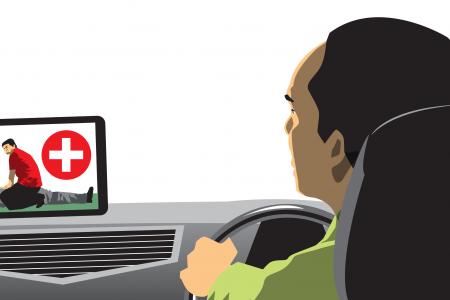Smart cars, better traffic
Nanyang Technological University (NTU) and NXP Semiconductors launched a high-tech test bed for smart cars and traffic system on the NTU campus last Friday. Infographics Journalist TEOH YI CHIE looks at how the system can improve driving

Features of the V2X (Vehicle-to-Everything) technology
1 The smart car system uses the 802.11p vehicular wireless system for communication. The system allows V2X-capable vehicles to communicate with other vehicles and intelligent infrastructure, such as traffic lights.

2 Smart cars can receive alerts when they approach areas with roadside units programmed to send notifications to oncoming cars.
Drivers can use the information to avoid danger areas.

3 Traffic lights can be programmed to give priority to emergency vehicles, such as ambulances or police cars. They can turn green for emergency vehicles before they approach.

4 The system can improve traffic flow when information, such as about areas of traffic congestion, is broadcast to drivers in advance, so they can avoid such areas.

5 Cameras can be set up in cars to allow live video footage to be streamed to other drivers. This can be used for surveillance or to find out road conditions even if there is no line of sight.
TIMELINE
Over the next four years, the smart mobility test bed will involve 100 vehicles and 50 roadside units to research V2X technologies.
After that, the test bed area will expand out of NTU’s premises to include cars from the public.

V2X chipset made by NXP Semiconductors, used for wireless transmission in cars.
More roads, tunnels, or overpasses will not solve the traffic challenges in megacities in the long run. What we need are more intelligent systems.
— Mr Drue Freeman, senior vice-president, Global Automotive Sales & Marketing of NXP Semiconductors.
Get The New Paper on your phone with the free TNP app. Download from the Apple App Store or Google Play Store now



